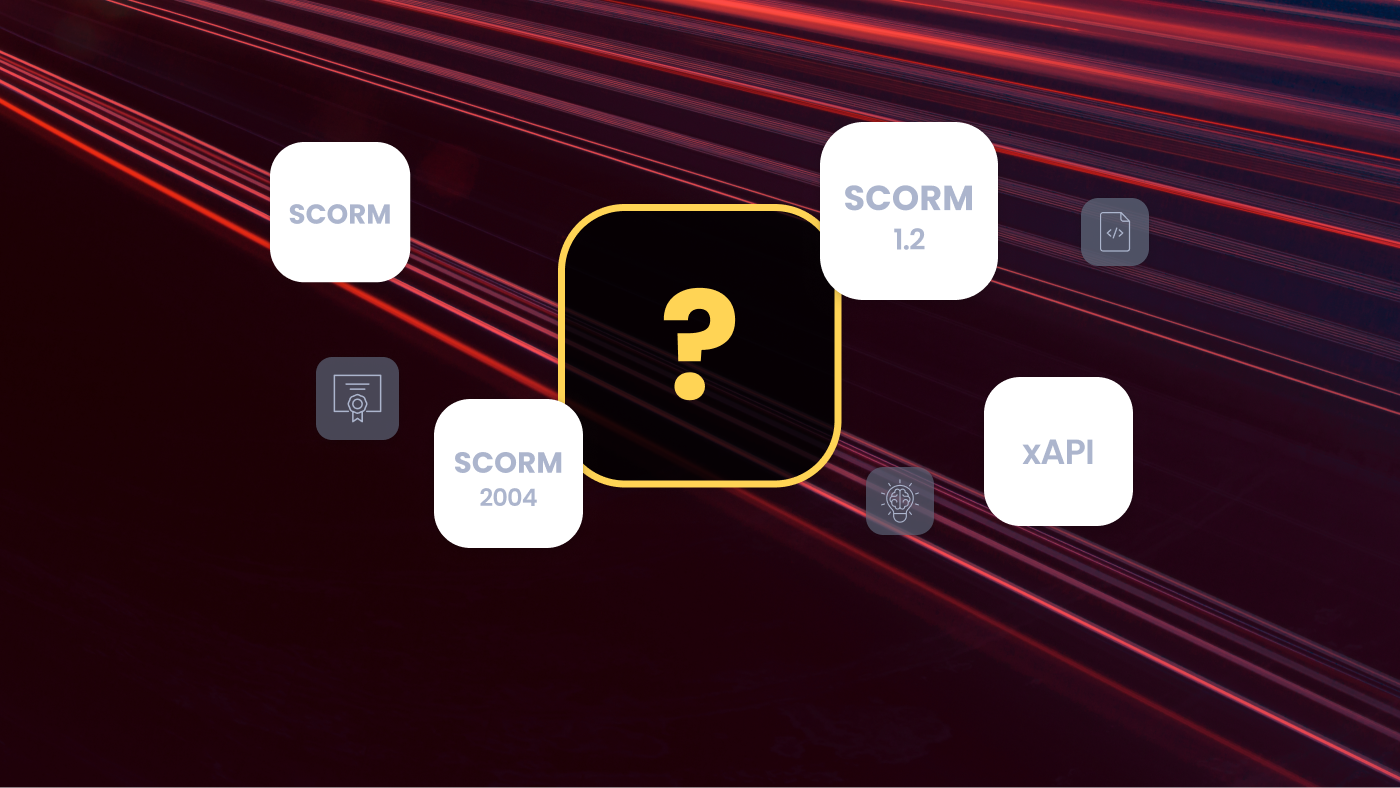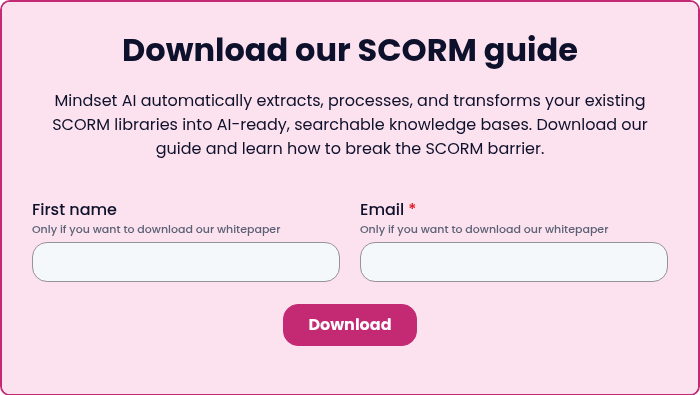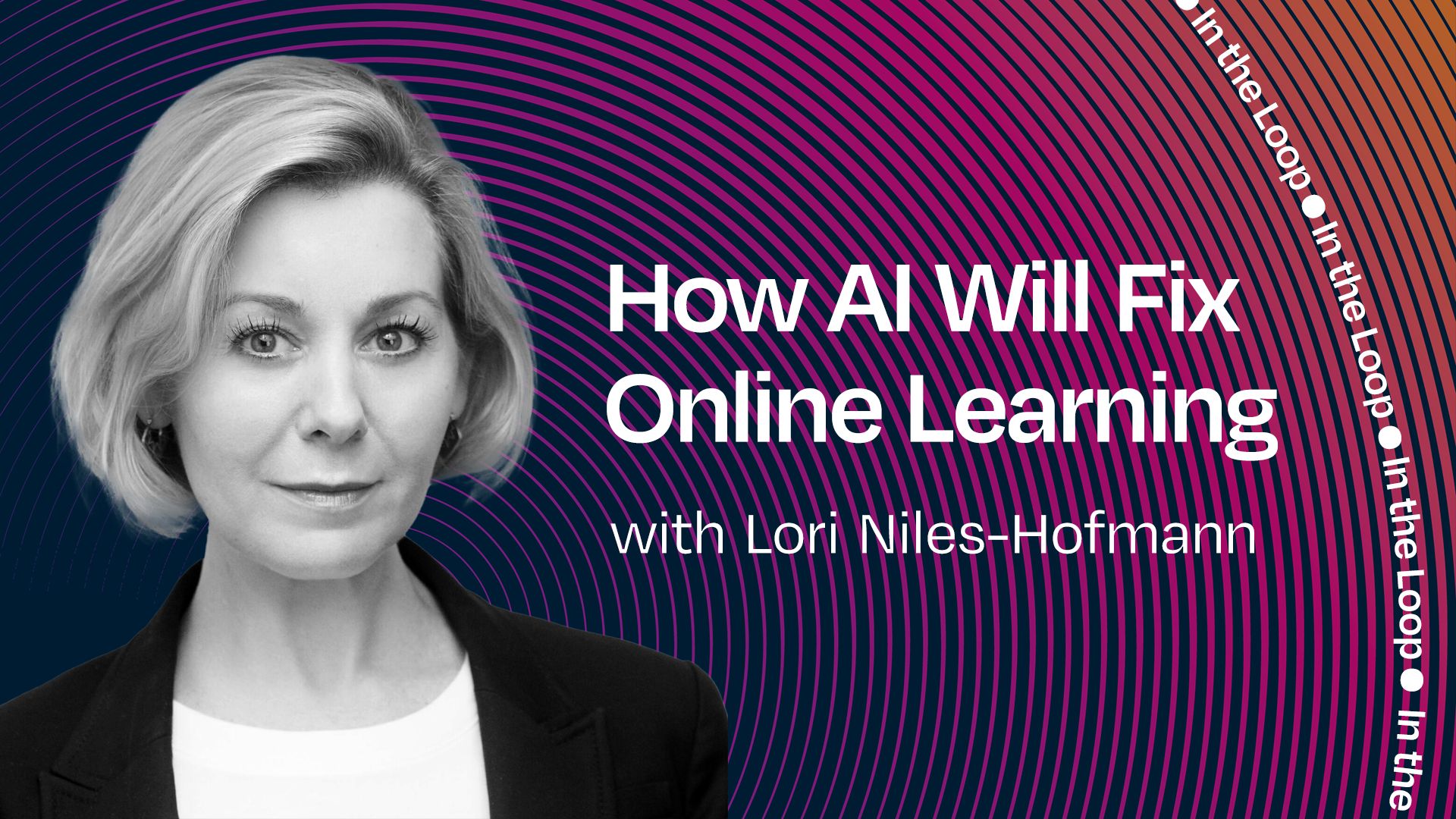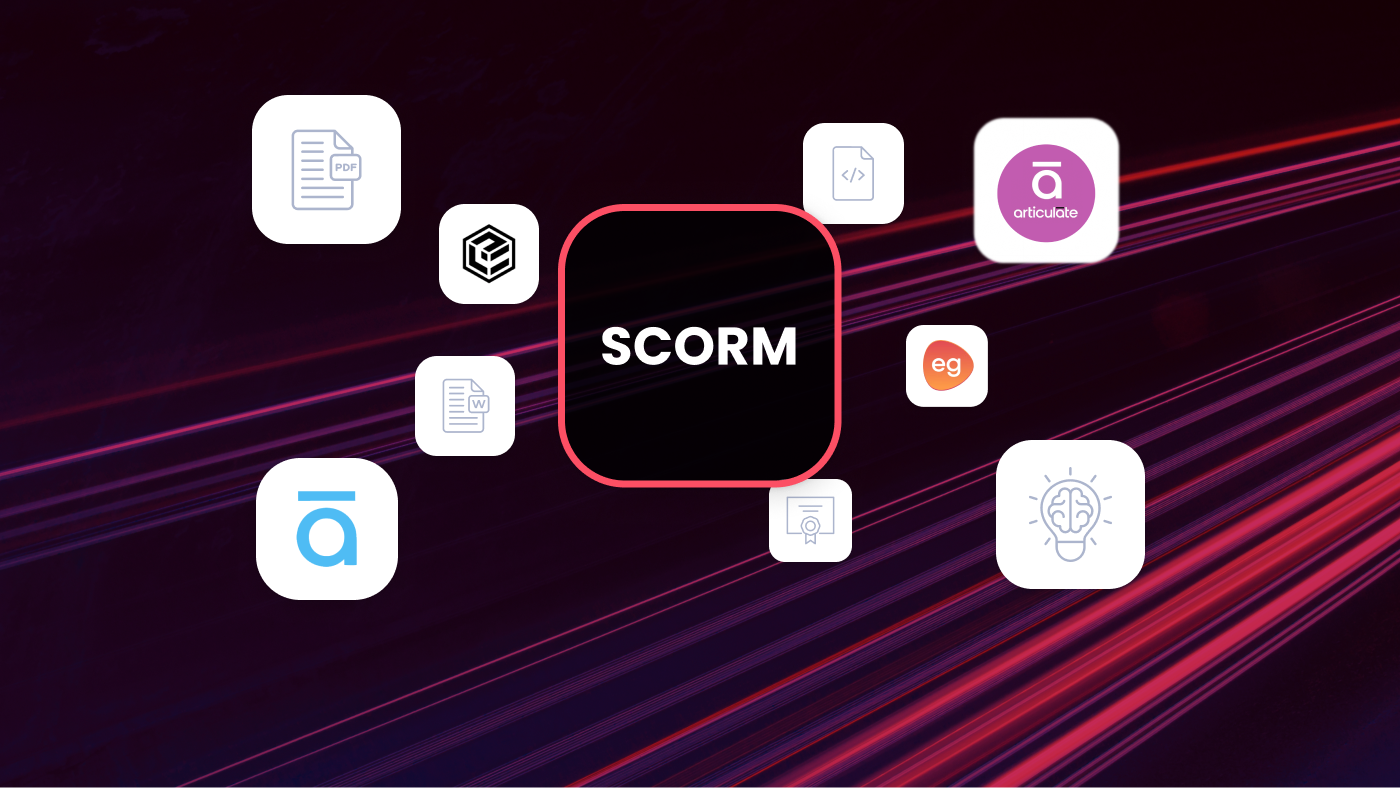What’s Replacing SCORM—And Should SCORM Be Replaced Or “Just” Transformed?

Published by
Published on
Read time
Category
Your SCORM library is collecting digital dust. You know it, your learners know it, and your completion rates prove it.
Those carefully crafted courses that took months to build? They're sitting unused in your LMS while employees scroll past them like yesterday's news—or turn to ChatGPT instead. The problem isn't just engagement—though that's painful enough. It's that SCORM itself has become the bottleneck.
What's replacing SCORM isn't just a technical question anymore. It's a mindset shift and a business imperative. Modern learners expect interactive, personalized experiences that adapt to their needs. They want learning that follows them across devices and platforms. Most importantly, they want content that doesn't feel like a relic from 2005.
But is the question really what to replace SCORM with—and could it be done, anyway? A better question is how to transform your SCORM into something truly magical—at scale and fast.
The good news? AI can do that. Better yet, it can go beyond SCORM and integrate other tools into the learning experience.
This isn't about throwing out years of content investment—can you imagine starting from scratch? It's about breathing new life into static materials and building on standards that were designed for today's learning reality, not yesterday's constraints.
So let’s take a look at why SCORM versions matter, what alternatives there are, and how agentic AI frameworks and tools can re-energize your rusty-dusty SCORM content.
SCORM's current limitations and version comparison
SCORM is a technology that has served e-learning providers as well as any tech with the time’s limitations could—SCORM has its place and purpose.
So before we announce SCORM dead and look for alternatives, let’s take a look at the most common standards out there. After all, 62% of businesses use SCORM in their LMS, most of them still run SCORM 1.2, even though SCORM 2004 offers significant improvements.
Which is better: SCORM 1.2 or SCORM 2004?
SCORM 1.2 provides basic tracking with these limitations:
- Simple pass/fail and completion status only
- Maximum suspend data size limited to 4096 characters
- Very limited capability for accepting details about interactions
- No advanced sequencing or navigation control
SCORM 2004 adds substantial improvements:
- Status separation, read-write interactions, and sequencing capabilities
- Enhanced interactions with full question and answer text
- Complex navigation and learning path controls
- Better objective tracking and reporting
Version 1.2 still rules the e-learning world for a reason: it's simple, stable, and works almost everywhere. Version 1.2 is compatible with most LMS platforms, while SCORM 2004 compatibility varies.
But here's the real issue: both versions share fundamental limitations that prevent modern learning experiences. They can't track mobile learning, social interactions, or real-world applications. They lock your content inside the LMS and provide minimal data about actual learning effectiveness.
That's why forward-thinking organizations are looking beyond SCORM entirely.
Some of the new standards expanding SCORM's capabilities
Here's the truth: SCORM isn't dying. It's being built upon.
SCORM, xAPI, and other standards all have their role to play in e-learning in 2025 and likely beyond. The question isn't whether to abandon your SCORM investment—it's how to extend it with modern capabilities that capture the learning data you actually need.
Is xAPI better than SCORM?
Depends on what you're measuring.
While SCORM serves for content creation and delivery, xAPI (a.k.a. Tin Can or Experience API) focuses on tracking and communicating learning data. Think of xAPI as SCORM's data-savvy cousin who can tell you what happens after learners close their browsers. So it is a powerful complimentary technology instead of a replacement.
Where xAPI shines:
- Tracks learning on mobile devices, where 70% of corporate learners feel more motivated to learn
- Records learning experiences across different platforms and devices, including offline environments
- Enables adaptive learning that adjusts difficulty based on learner behavior and results
- Captures more and richer data, more reliably than SCORM
Where SCORM still wins:
- More cost-efficient and compatible with most LMSs
- Provides a wealth of documentation and a smoother implementation process
- Works well for traditional course delivery
So, in short, xAPI is better as a SCORM complem.entary tool rather than a full replacement. Deploy your existing SCORM content for structured courses while adding xAPI tracking for performance support, social learning, and real-world application.
What about cmi5 files?
cmi5 combines the features of both AICC and SCORM specifications while tapping the benefits of xAPI. As cmi5 takes the best aspects of both SCORM and xAPI, it surpasses them in terms of simplicity.
Why cmi5 matters:
- Maintains SCORM's familiar launch-and-track model
- Uses standardized JSON document structure for better data export
- Provides richer tracking without the complexity of full xAPI implementation
- Modern authoring tools like iSpring Suite now publish to SCORM, xAPI, and cmi5
But cmi5 is not yet as widespread and is being adopted slowly. It’s worth keeping an eye on, though.
Other standards worth knowing
- Learning Tools Interoperability (LTI) focuses on connecting learning tools rather than tracking experiences. It's perfect for integrating third-party applications with your LMS while keeping your SCORM content intact.
- EPUB for Education brings interactive content standards to mobile-first learning, complementing rather than competing with your existing SCORM library.
The real SCORM alternative: AI enhancement
Here's where it gets interesting. These standards already have the data structure that AI needs to transform your existing content. Well, not all AI, but tools like Mindset AI can ingest and transform SCORM content at scale.
Mindset AI can analyze SCORM data streams to identify learning gaps, predict completion rates, and automatically adjust content difficulty. It can take your static SCORM courses and add dynamic elements based on real learner behavior across all these platforms.
You don't need to choose between SCORM, xAPI, cmi5, or other standards. You just need an AI framework that can understand and build on your current learning ecosystem. This way, each standard handles what it does best, while AI bridges the gaps and creates the personalized experiences your learners actually want.
The future of SCORM is agentic frameworks that transform dusty libraries into well-engaged, enjoyable content. Let’s see how this might look.
How AI analyzes and enhances existing SCORM content
AI and SCORM integration can help generate engaging and effective e-learning content that follows SCORM standards, automatically tracking learner progress to suggest personalized learning modules.
Content analysis capabilities
- Scans existing courses to identify knowledge gaps and outdated information
- Analyzes completion rates and quiz performance to pinpoint problem areas
- Reviews text density and suggests optimal content chunking
- Identifies opportunities for interactive elements
Automatic enhancement features
- Converts PPT, PDF, videos, or any document files into interactive SCORM-compatible courses within minutes
- Adds branching scenarios based on learner responses
- Generates discussion prompts and reflection questions
- Creates multimedia elements from text-heavy content
Adding interactivity to static materials
Mindset AI can create interactive learning experiences sitting on top of your SCORM, including simulations, games, and personalized feedback loops, keeping learners motivated and actively participating.
Interactive elements AI can add
- Scenario-based learning: Transform case studies into branching simulations
- Gamification features: Add progress bars, badges, and challenge modes
- Adaptive questioning: Questions that adjust difficulty based on previous answers
- Social learning components: Discussion forums and peer review activities
Personalization through AI-driven content adaptation
SCORM content can support adaptive learning, enabling course creators to tailor content to individual learners and address different knowledge levels.
Personalization techniques
- Content difficulty adjustment: AI analyzes performance and adjusts complexity
- Learning path optimization: Creates custom sequences based on job roles or skill levels
- Just-in-time delivery: Surfaces relevant content when learners need it most
- Multilingual adaptation: AI can develop and deploy eLearning content in over 280 languages
Next steps
SCORM isn't dead—it's just incomplete for today's e-learning needs.
The question isn't what's replacing SCORM, but what's enhancing it. Smart organizations are building learning ecosystems where SCORM handles content delivery, and AI transforms static materials into personalized experiences.
You don't need to abandon years of content investment. You need to make it work harder.
Start your SCORM transformation journey today with Mindset AI.
Book a demo today.




.png)
.png)
.png)
.png)
.png)
.png)
.png)
.png)
.png)
.png)

.png)


.png)
.png)
.png)

.png)
.png)


.png)
.png)
.png)
.png)
.png)
.png)

.png)
.png)
.png)
.png)
.png)
.png)
.png)
.png)
.png)


.png)
.png)
.png)

.png)
.png)
.png)

.png)
.png)
.png)



.png)






.jpeg)